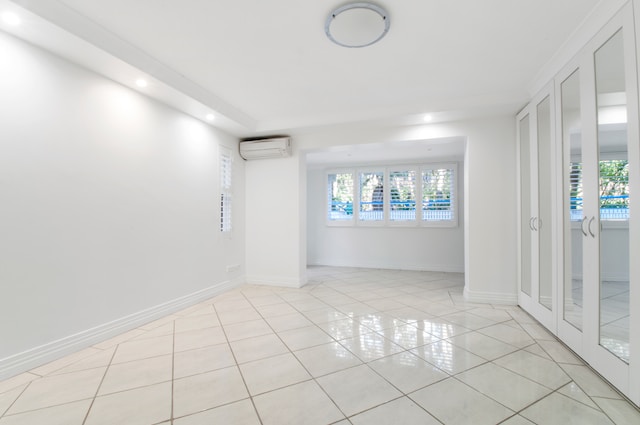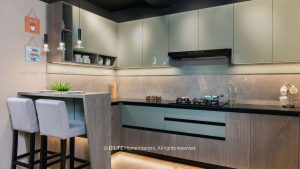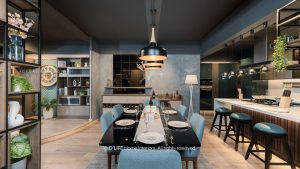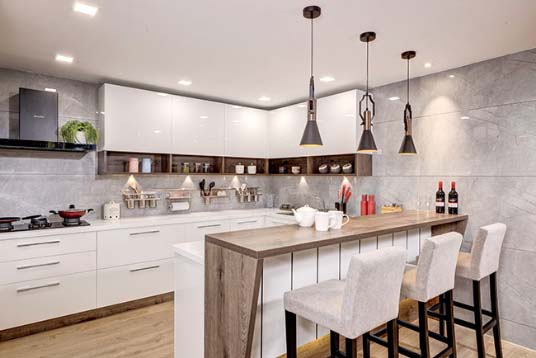Common Floor Plan Mistakes When Building a Home and How to Avoid Them

Building a home is an exciting and fulfilling experience. It allows you to create a space that perfectly suits your needs and reflects your personal taste. However, in the process of designing your floor plan, it’s important to be aware of common mistakes that can have a significant impact on the functionality and flow of your home. Let’s discuss some of the most common floor plan mistakes when building a home and provide tips on how to avoid them.
Ignoring the Importance of Natural Light
One of the biggest mistakes homeowners make is not paying enough attention to natural light when designing their floor plan. Insufficient or poorly placed windows can result in dark and gloomy interiors. To avoid this, take into consideration the position of the sun throughout the day and strategically place windows to maximize natural light in each room. Consider incorporating skylights or light tubes as well.
Overlooking Traffic Flow
Traffic flow refers to the movement of people within a space. It’s important to consider how people will navigate through your home to ensure efficient and comfortable movement. Avoid creating narrow corridors or obstructed pathways that may impede foot traffic. Ensure that doorways and hallways are wide enough, and position rooms in a way that allows for a logical and seamless flow from one area to another.
Lack of Proper Storage Space
Insufficient storage space is a common mistake that can lead to clutter and a lack of organization in your home. When designing your floor plan, plan for ample storage areas such as closets, built-in shelves, and cabinets. Consider incorporating storage solutions that utilize vertical space, such as floor-to-ceiling cabinets, to maximize the available area.
Not Considering Future Needs
When building your home, it’s important to think not only about your current needs but also about your future requirements. Consider factors such as potential growth of your family, aging in place, or accommodating guests. Incorporating flexible spaces that can be easily converted or repurposed, such as a home office that can later be transformed into a nursery or guest bedroom, can save you from costly renovations down the road.
Neglecting the Flow of Rooms
The layout and flow of rooms are crucial to creating a functional and harmonious home. Avoid placing bedrooms next to noisy areas such as the kitchen or living room. Consider the proximity of the kitchen to the dining area to ensure ease of serving and a smooth transition between spaces. Take care to design a logical and intuitive flow between rooms to enhance the overall functionality of your home.
Underestimating the Importance of Privacy
Privacy is a vital consideration when designing your floor plan. Overlooking privacy concerns can result in uncomfortable living situations. Ensure that the new bedroom design and bathrooms have adequate separation from common areas. Plan the placement of windows to avoid direct views into neighboring houses. Carefully evaluate the positioning of rooms that require privacy to create a comfortable living environment.
Not Including an Entrance Lobby
An entrance lobby is an essential feature that sets the tone for your home and creates a welcoming atmosphere for guests. One common floor plan mistake is overlooking the inclusion of an entrance lobby or foyer. Without a designated space for the entryway, the main door may open directly into a living area, creating a lack of privacy and leaving no room for receiving guests. To avoid this mistake, allocate a separate area near the entrance for an entrance lobby. This space can serve as a transition zone between the outdoors and the interior, providing a place to greet guests, store coats and shoes, and create a favorable first impression of your home.
Not Opening Enough Windows
Windows play a crucial role in a home, providing natural light, ventilation, and a connection to the outdoors. However, one common floor plan mistake is not opening enough windows or not strategically placing them. Insufficient windows can result in dark, gloomy spaces that lack fresh air circulation. When designing your floor plan, consider the placement and size of windows carefully. Incorporate windows in each room to maximize natural light and provide cross ventilation. Pay attention to the orientation of your home to ensure that windows capture desirable views and make the most of natural daylight.
Not Considering Furniture Proportions
Furniture is an integral part of a home, and it’s important to consider its proportions when designing a floor plan. One common mistake is overlooking the size and scale of furniture in relation to the room’s dimensions. If the furniture is too large or too small for the space, it can create an imbalance and make the room feel cramped or empty. To avoid this mistake, measure your furniture and plan the room layout accordingly. Allow sufficient space for comfortable movement and ensure that furniture pieces complement the overall design and functionality of the room.
Overlooking Site Conditions and Aspects
The site conditions and aspects of your property have a significant influence on the design of your floor plan. Neglecting to consider these factors can lead to suboptimal living spaces. For example, failing to account for the direction of prevailing winds may result in poorly ventilated areas. Similarly, disregarding the natural topography or views offered by the site can diminish the overall appeal of your home. When designing your floor plan, take into account the site’s features, such as the slope, vegetation, neighboring structures, and scenic vistas. By aligning your design with the site conditions and aspects, you can create a home that harmonizes with its surroundings and maximizes its natural attributes.
By being aware of these common floor plan mistakes when building your home, you can save yourself from future frustrations and ensure that your space is functional, comfortable, and meets your specific needs. Collaborating with an experienced architect or designer can also be invaluable in avoiding these pitfalls and creating a well-designed floor plan. Remember, careful planning and attention to detail during the design stage will lead to a home that you can enjoy for years to come.
Search
Categories
- Apartment Interior Works
- Bangalore Interior Designers
- Celebrity Home Interiors
- Cochin Interior Design
- Contemporary Home Interiors
- Customized Modular Kitchen
- Furniture Maintenance
- Home interior review
- Home Interiors
- Home Interiors in Chennai
- home interiors in kannur
- Interior Design Ideas
- Interior Design in Kerala
- Interior Designers Hyderabad
- Kitchen Interior Design
- Modern Kitchens
- Uncategorized
Most Popular Post
Recent Posts
- Make Every Day Special: Creating Happy Spaces at Home
- The Collaborative Process: How Designers and Clients Work Together at D’LIFE
- Zen Interiors: Creating a Peaceful Home with Minimalistic Design
- D’LIFE Interiors Reviews in Bangalore: How we Transformed a House into a Dream Home
- D’LIFE Interiors Reviews from Celebrities: Why Celebrities Trust D’LIFE



